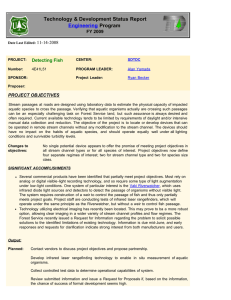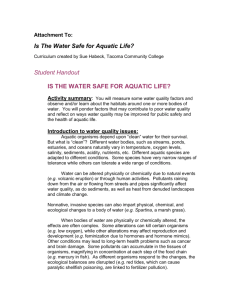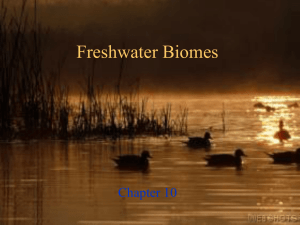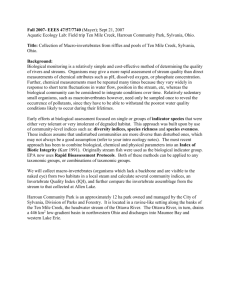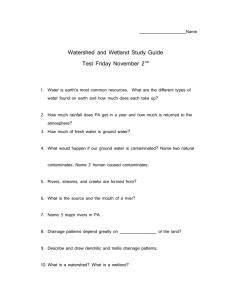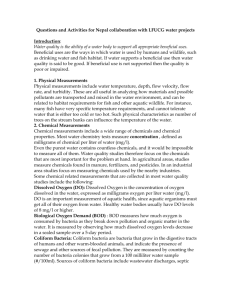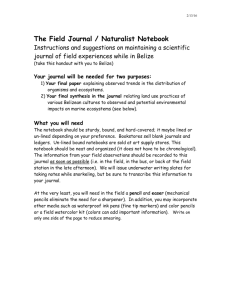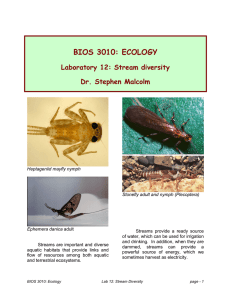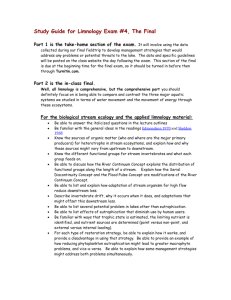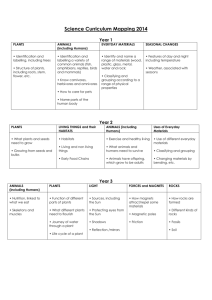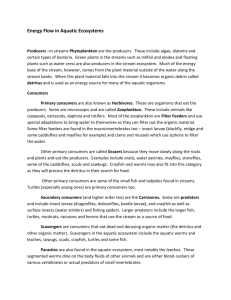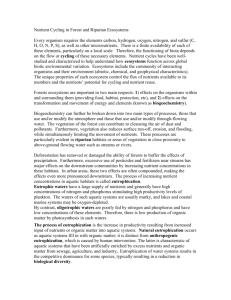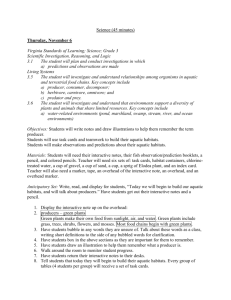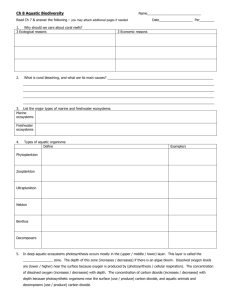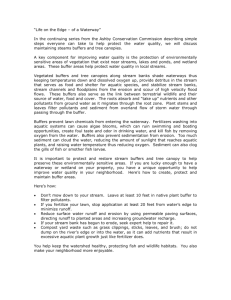Fresh Water Biomes Concept Review
advertisement
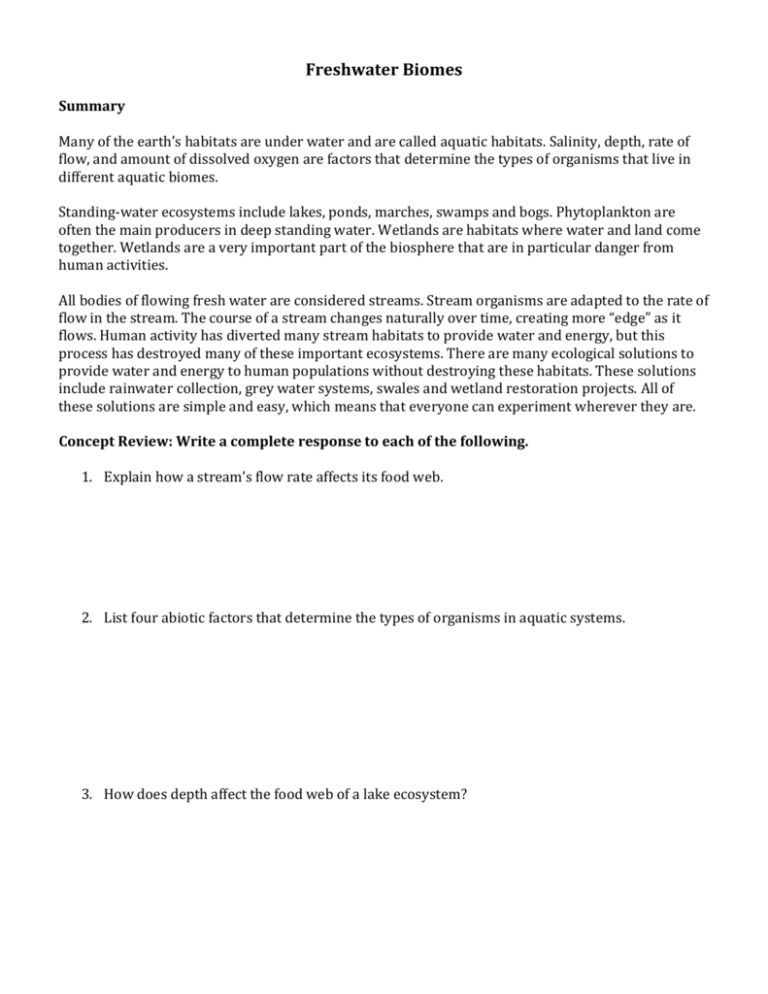
Freshwater Biomes Summary Many of the earth’s habitats are under water and are called aquatic habitats. Salinity, depth, rate of flow, and amount of dissolved oxygen are factors that determine the types of organisms that live in different aquatic biomes. Standing-water ecosystems include lakes, ponds, marches, swamps and bogs. Phytoplankton are often the main producers in deep standing water. Wetlands are habitats where water and land come together. Wetlands are a very important part of the biosphere that are in particular danger from human activities. All bodies of flowing fresh water are considered streams. Stream organisms are adapted to the rate of flow in the stream. The course of a stream changes naturally over time, creating more “edge” as it flows. Human activity has diverted many stream habitats to provide water and energy, but this process has destroyed many of these important ecosystems. There are many ecological solutions to provide water and energy to human populations without destroying these habitats. These solutions include rainwater collection, grey water systems, swales and wetland restoration projects. All of these solutions are simple and easy, which means that everyone can experiment wherever they are. Concept Review: Write a complete response to each of the following. 1. Explain how a stream’s flow rate affects its food web. 2. List four abiotic factors that determine the types of organisms in aquatic systems. 3. How does depth affect the food web of a lake ecosystem? 4. Describe four beneficial functions of wetlands? 5. Why does the reproductive behavior of salmon make the fish vulnerable to changes in habitat? 6. Certain farming and irrigation practices increase the amount of sediments that are carried by streams. How might these practices affect the ecosystem of a stream? What are some possible solutions to this type of agriculture?
